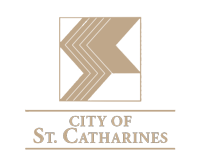We simplify architectural design with a six-step process primed for success
Want to know how our Ontario architectural design company always achieves the builds of your dreams? By sticking to a streamlined creative process, that’s how! Take a look at our tried-and-tested customer approved architectural design process below. By carefully following this six-step process for every project, we can guarantee success time and time again. Discover how each phase has a pre-defined purpose and a level of expectation attached.

Pre-Design and Programming
Before any Ontario architectural design begins, Lima Architects will meet with new clients to discuss, in detail, their precise requirements and expectations. Our architectural team will discuss budgets, timeframes, and any other requirements. These often include zoning by-laws and Ontario Building Code regulations. The information collected at this stage is what we refer to as the design brief. By working in this manner, each project can start in the best possible manner.
01

Schematic Design
At this stage, we analyze the architectural design brief requirements and present initial design proposals to clients. To develop an initial concept, we will draw up schematic plans and/or 3D views. We may present a few alternative proposals by way of drawings and sketches. Lima Architects and the client will likely have several discussions about these proposals. Drawings can sometimes be difficult to understand and for that reason, we rely heavily on our initial 3D views and renderings to help the client gain a better understanding of the design. We use BIM (Building Information Modeling) on all our projects which also promotes a more efficient way to coordinate our work.
02

Design Development
Having translated the design brief into design plans, we will develop the initial proposal into a more detailed set of drawings. At this stage, we usually prepare the site plan, all floor plans, elevations, and 3D renderings. Coordination with all the other consultants takes place too. We’ll also decide with the client what energy efficiency strategies will be taken. After finalizing the drawing package, all related planning applications take place. This includes zoning certificates, site plan approval, and/or minor variances.
03

Design Development Construction Documents (Detail Design)
Firstly, the municipality and client must approve the architectural design development plans. Secondly, Lima Architects will produce a full set of construction drawings. This package includes all specifications, detailed plans, elevations, sections, and construction details. At this stage, we will also coordinate and obtain the drawings from the other consultants, and a building permit application can be made. Our office usually applies for the building permit on behalf of clients.
04

Tendering for a Contractor
At this stage, Lima Architects prepares what is called a tender package. This includes all the drawings prepared in the previous phase, plus the tender forms. We usually invite at least three bidders. As each contractor will base their costing on the same information, their submissions can be compared and analysed. The client should be satisfied that the chosen contractor is competent to carry out the work. For example, you should ask a contractor to see samples of previous work and speak to previous clients of theirs. In some cases, the architect and client may agree to negotiate a tender price with just one contractor.
05
During Construction
During construction, Lima Architects will act on a client’s behalf as an independent advisor. This includes providing site reviews, at appropriate intervals, to ensure that the construction is being carried out in general conformance with the contract documents (drawings and specs) and the Ontario Building Code. Our office always produces a detailed site report. This documents the stage of the construction and detects any deficiencies and follow-ups. Lima Architects usually provides certificate of payments, site instructions, and change orders at this stage.
06
At the end of the construction, we review the work and, if ready, we issue the Certificate of Substantial Performance to be published by the contractor as per the lien act. An occupancy sign-off letter and/or a deficiency list (as applicable) are also issued at this time. Once all the deficiencies are addressed, a final completion certificate is issued. This phase is usually not applicable for custom homes and smaller residential projects.
Start discussing the building of your dreams now
What Clients Say

Working with Lima Architects Inc was amazing. Fernando is a great person to work with and he helped me design my dream house. He always listens and provides great feedback. I would highly recommend working with this business!

Gurjit Singha
Google my Business
I have know Fernando for several years and have hired his services for 2 residential and one commercial jobs. He is very professional, has great ideas and is responsive to adjustments and innovative concepts. Fernando has always been fair with pricing and pays attention to the fine details required. His company is 5 star in my books!

Paul Martin
Google my Business
We chose lima architects based on a referral from a friend and builder. Our experience dealing directly with lima architects has been very rewarding as we enjoy the patience and professionalism that their team provides. We shared our big picture dream and the team has made it a reality and now it is time submit to the city for permits. Very exciting.













